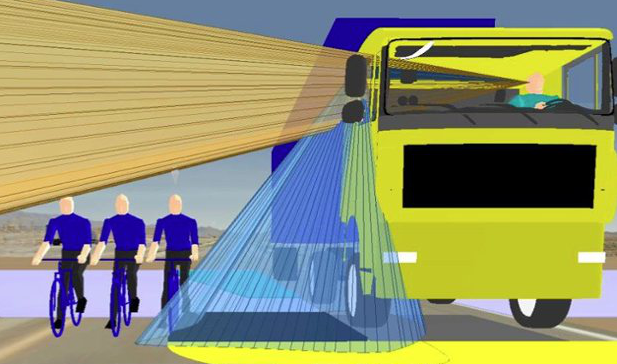
Great strides have been made in recent years towards the use of fuel efficient vehicles and the effective application of new technologies to all types of commercial transport. The growing need for more transport options and the pressure on environmental protection means that businesses have to focus on cost savings and implementing efficiencies if they want to stay competitive. Future demand for commercial transport is expected to grow in line with GDP throughout Europe. As the cost of fuel forms a significant portion of overall operational costs, solutions must be found to drive costs down and increase safety and security.
Fuel efficiency
The use of liquefied natural gas (LNG) is transforming truck fuel systems and design of heavy goods vehicles (HGVs). Dual fuel systems, where LNG is mixed with diesel fuel, have the potential to reduce cost per kilometre as well as reducing greenhouse gas emissions. Both Shell and BOC are working with original equipment manufacturers (OEMs) to further develop LNG as a fuel for heavy-duty truck operators. Michael Tucker, CEO of Noble Foods, a company with a fleet of over 200 vehicles at seven sites in the UK, reports that “dual fuel systems have given us the best of both worlds, lower fuel bills and lower CO2 outputs and maybe further capital savings in the future”.
Environmental impact
Heavy goods vehicles are responsible for up to 20 per cent of greenhouse gas emissions in the UK according to the UK Government which is committed to giving funding to carbon reduction initiatives. The Freight Transport Association (FTA) is promoting the use of longer semi-trailers which pose no greater safety risk than normal and are valuable in reducing HGV miles and making carbon savings. “FTA is a supporter of the use of longer semi-trailers as they provide significant environmental and efficiency benefits,” said Andy Mair, Head of Engineering at FTA. Leading advocacy organizations are calling on government agencies to set new fuel efficiency and greenhouse gas standards for heavy trucks that will cut fuel consumption by 40 percent in 2025 compared to 2010. Such standards would reduce per-mile freight costs considerably and save millions of pounds annually. Sustainability goals and carbon emissions standards are certain to be implemented more widely in the coming years. This will require more disclosure and results reporting by companies, especially those listed publicly.
Operational efficiencies
Major fleet owners and operators such as Walmart, FedEx and Unilever are leading the way in operational efficiency initiatives. FedEx, the second largest for-hire fleet globally, has been an early leader in the call for heavy truck fuel efficiency and lower greenhouse gas standards. It plans to improve fuel efficiency by 30 percent (compared to 2005) by 2020. The company has nearly achieved its goal already, thanks to its “Reduce, Replace and Revolutionize” strategy and is advocating public policy changes. Walmart has implemented fuel efficiency standards and revised policies and other leading companies, including HP, Procter & Gamble, Target and Hershey’s, are setting specific sustainability performance targets. Unilever has committed to lower CO2 emissions from global logistics at or below 2010 levels by 2020. These initiatives are intended to provide efficiencies as well as protecting the environment.
Safety
Research was recently commissioned by Transport for London (TfL) in order to find out why HGVs are disproportionately involved in collisions involving so-called ‘vulnerable users’ in London, i.e. pedestrians, cyclists and motorcyclists. Loughborough University researchers found that that lorries with high cabs have the most blind spots and pose the greatest risk to vulnerable users. Their report proposed new standards to define what should be visible through direct vision from an HGV. “If you seriously want to reduce the number of collisions involving vulnerable road users and HGVs you have to improve the direct field of vision for drivers – and from our research this means lowering HGV cab designs or adopting low entry cab designs.”, the report said. Today’s trucks are being fitted with the latest active and passive technologies to prevent accidents, reduce collisions and protect drivers from harm. Truck fatalities generally have reduced where life-saving technologies have been implemented.
Equipment innovations
Innovations inside the cab are assisting drivers in many ways. Digital side view mirrors are effective but cameras with large displays and touch screens are being tried out to replace them which can reduce wind resistance and therefore cut fuel consumption. Cameras also aid recognition of traffic signs, incorporating them into the driver’s display. Intelligent headlight control can automatically turn on the headlights during night driving or in tunnels and can alert drivers that they are in danger of drifting out of their lane by, for example, vibrating the steering wheel.
Telematics
Back In the control room, computers document multiple pieces of data such as the truck’s position, refrigeration temperature or severe vibrations and report errors immediately to the operator. Telematics is the technology of sending, receiving and storing information relating to remote objects – like vehicles – via telecommunication devices. GPS tracking is one of the best known uses of this technology when it is applied to routing and scheduling. Suppliers and logistics consultants in this niche area provide support for clients in making informed decisions about software and solutions designed to reduce costs and boost operational performance.
Key issues
Strong heavy truck fuel efficiency and greenhouse gas standards are the single most important opportunity. The business community has to reduce the environmental impact of product distribution while also delivering significant benefits to their bottom line. Berkshire based logistics consultants Go Supply Chain predict, “there will be further development of in-vehicle technologies, more flexible and aerodynamic design, improved driver training, intelligent infrastructure and logistics, and the availability of alternative fuels”.
